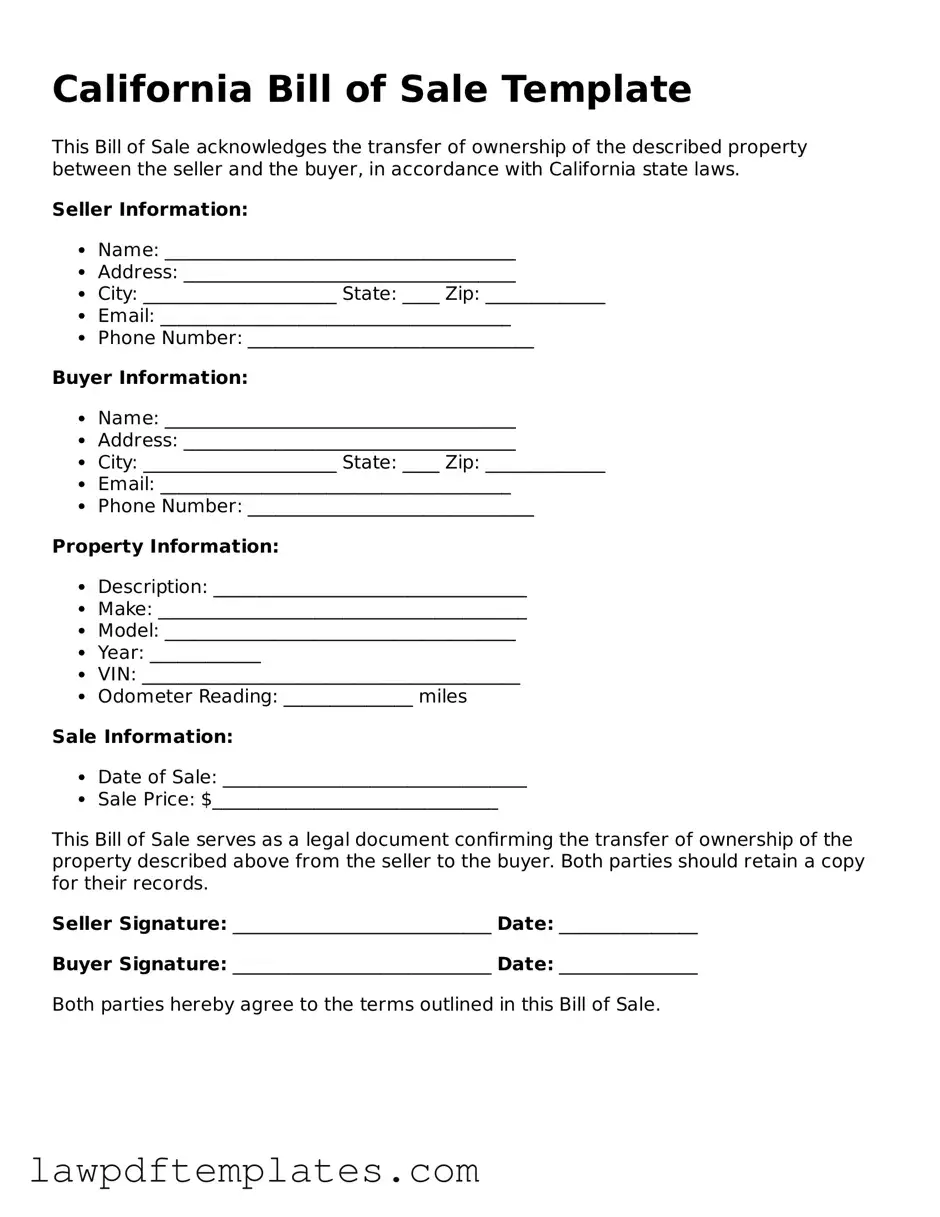When completing the California Bill of Sale form, individuals often overlook critical details that can lead to complications later. One common mistake is failing to include the correct date of the transaction. This date is essential for establishing the timeline of ownership transfer and can affect liability and tax implications.
Another frequent error involves neglecting to provide accurate vehicle or item identification. For vehicles, this means not including the Vehicle Identification Number (VIN). For other items, a detailed description is crucial. Without this information, proving ownership can become problematic.
People also often forget to include the purchase price. This figure is not just a formality; it serves as a record of the transaction value, which can impact taxes and future resale. Omitting this detail can lead to misunderstandings or disputes later on.
Many individuals do not sign the form. A signature is a vital part of validating the document. Both the seller and buyer should sign, as their consent is necessary for the transaction to be legally recognized.
Another mistake is not providing the correct names and addresses of both parties. This information ensures that all parties can be contacted if any issues arise. Errors in names or addresses can lead to confusion and potential legal challenges.
Some people fail to check the form for completeness before submission. Leaving sections blank can invalidate the document. Each part of the Bill of Sale must be filled out accurately to ensure it serves its intended purpose.
Additionally, individuals sometimes do not keep a copy of the completed Bill of Sale. Retaining a copy is important for personal records and can serve as proof of the transaction if disputes arise in the future.
In some cases, people may not understand the implications of the Bill of Sale. It is not merely a receipt; it is a legal document that can impact ownership rights and responsibilities. Failing to grasp this can lead to unintended consequences.
Another error involves using outdated forms. Legal documents can change over time, and using an old version of the Bill of Sale may lead to issues. Always ensure that you have the most current form.
Lastly, individuals sometimes rush through the process. Taking the time to review each detail can prevent costly mistakes. A thorough approach ensures that the Bill of Sale is complete and accurate, protecting both parties involved.
